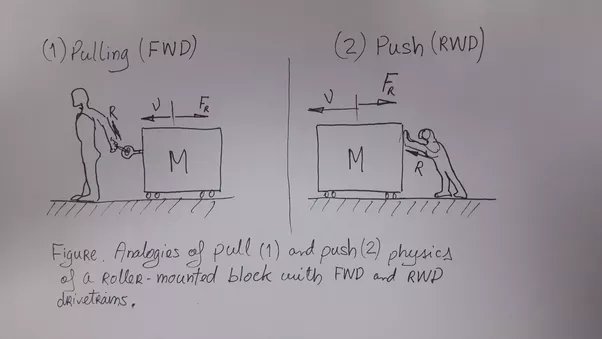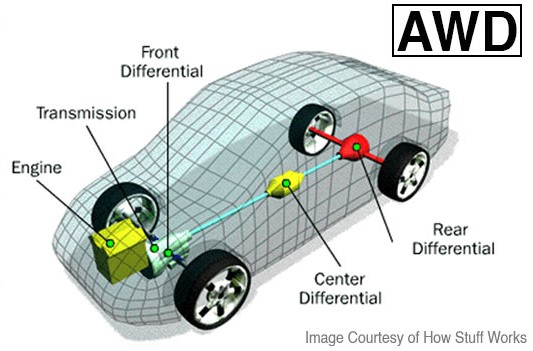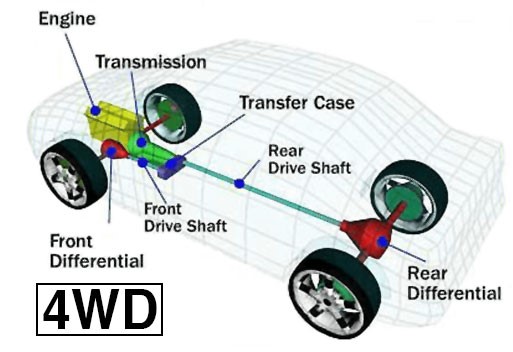There are four different types of drivetrain: front wheel drive (FWD), rear wheel drive (RWD), all-wheel-drive (AWD) and Four-wheel drive (4WD). When you purchase replacement shocks and struts for your car, it’s important to know which drive system your vehicle has and confirm the fitment of shock absorber or struts with the seller. We will share a little knowledge to help you understand.
Front-Wheel Drive (FWD)
Front wheel drive means that the power from the engine is delivered to the front wheels. With FWD, the front wheels are pulling while the rear wheels don’t receive any power.
FWD vehicle typically gets better fuel economy, such as Volkswagen Golf GTI, Honda accord, Mazda 3, Mercedes-benz A-class and Honda Civic Type R.
Rear-Wheel Drive (RWD)
Rear wheel drive means that engine power is delivered to the rear wheels which in turn push the car forward. With RWD, the front wheels do not receive any power.
RWD vehicles can handle more horsepower and higher vehicle weights, so it is often found in sports cars, performance sedans and race cars such as Lexus IS, Ford Mustang , Chevrolet Camaro and BMW 3 Series.
(image credit: quora.com)
All-Wheel Drive (AWD)
All-wheel drive uses a front, rear and center differential to provide power to all four wheels of a vehicle. AWD is often confused with four-wheel drive but there are some key differences between them. Generally, a AWD system operates as a RWD or FWD vehicle– most are FWD.
AWD is often associated with road-going vehicles, such as sedans, wagons, crossovers, and some SUVs such as Honda CR-V, Toyota RAV4, and Mazda CX-3.
Four-Wheel Drive (4WD or 4×4)
Four-wheel drive means the power from the engine is delivered to all 4 wheels – all of the time. It is often found on large SUVs and trucks such as Jeep Wrangler, Mercedes-Benz G-Class and Toyota Land Cruiser, because it provides optimal traction when off-road.
(image credit: how stuff works)
Post time: Mar-25-2022










